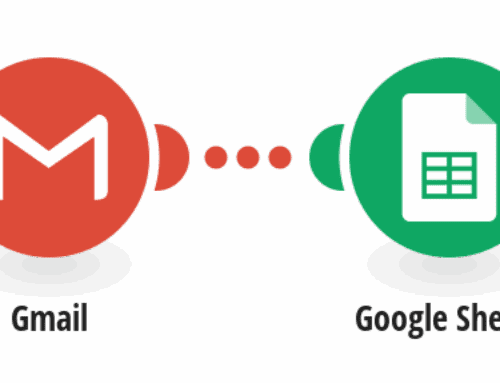How to Save New Squarespace Orders to Google Sheets
Introduction to Automating Order Management
In today’s fast-paced digital world, efficiency is key to running a successful online business. Managing orders manually can be tedious, prone to errors, and quite frankly, a time sink. This is especially true if you’re running an e-commerce store on Squarespace. Fortunately, there’s a nifty way to streamline this process by automatically saving new orders directly to Google Sheets. Imagine having all your order data neatly organized and easily accessible anytime, without lifting a finger. Sounds like a dream, right?
In this article, we’ll explore how you can set up this magical automation. We’ll dive into the nitty-gritty details that ensure every new order in Squarespace gets seamlessly transferred into your Google Sheets — saving you time and reducing the margin for error. Whether you’re tech-savvy or just getting started with automation, we’ve got you covered with this step-by-step guide.
Understanding the Benefits of Automation
Why should you bother with automation? The benefits are numerous! For starters, automating tasks like transferring order data can significantly reduce human error. Let’s face it, even the most meticulous person can make mistakes when inputting data manually. With automation, those errors become virtually non-existent.
Automation also frees up valuable time that can be better spent on tasks that require your attention, like growing your business or focusing on customer engagement. It’s like having a digital assistant who never tires, ensuring everything runs smoothly while you focus on the big picture. Essentially, it’s about working smarter, not harder.
Setting Up Your Squarespace Store for Success
Before diving into the automation process, ensuring your Squarespace store is correctly set up is crucial. This includes verifying that your products, checkout settings, and order confirmations are all properly configured. It’s like setting the stage before a performance – everything must be in perfect order to shine.
You’ll want to double-check that your payment gateways are operational and that your inventory settings reflect current stock levels. This way, when orders start flowing in, the system can function as intended without hiccups. Proper setup is the foundation upon which seamless automation is built.
Getting Started with Google Sheets
If you haven’t used Google Sheets before, don’t worry; it’s relatively user-friendly. Think of it as an upgraded version of a spreadsheet program that lives in the cloud. The key here is setting up a dedicated Google Sheet that will serve as the repository for your Squarespace orders.
Create a new spreadsheet in Google Sheets. Consider labeling columns for different data points like order date, customer name, product details, and total amounts. This setup ensures that once your automation is in place, each order populates the appropriate cells, keeping everything organized and easily searchable.
Connecting Squarespace and Google Sheets
The magic of automation happens through integration. Several platforms can help build this bridge between Squarespace and Google Sheets, such as Make (formerly Integromat). For those unfamiliar, imagine these platforms as translators, enabling two separate applications to communicate and share data effortlessly.
Begin by creating an account on the automation platform of your choice. You’ll need to set up a specific workflow or scenario where the triggering event (a new order in Squarespace) automatically sends information to your Google Sheets. Think of it like setting up a conveyor belt; once started, it keeps moving everything to its assigned destination.
Testing and Troubleshooting
Once you’ve set everything up, it’s vital to test the process to ensure everything works as expected. Place a test order in your Squarespace store and verify that the order details appear correctly in your Google Sheets. It’s like taking a car for a test drive before hitting the open road.
If you encounter any issues, don’t panic. Most automation platforms offer detailed logs and support that can help you pinpoint and resolve any snags. Sometimes it’s just a matter of tweaking a small setting or re-entering credentials. Patience is key in this trial-and-error phase.
Maintaining Your Automation Workflow
After everything is set up and running smoothly, it’s important to perform regular checks to ensure continued operation. Automation, much like any tool, requires occasional maintenance. Check for updates on your integration platform and stay informed about any changes in Squarespace’s API that might affect your setup.
Think of these checks as routine car maintenance – a little effort now prevents bigger problems later. Regular monitoring ensures your automation remains reliable and continues to save you time and effort as your business grows and evolves.
Conclusion
Automating the process of saving Squarespace orders to Google Sheets can transform how you manage your e-commerce business. By reducing manual tasks, you not only increase efficiency but also minimize potential errors. Now that you have set up this essential workflow, you can focus more on strategic business activities rather than mundane data entry.
With the steps outlined in this guide, you’re well on your way to streamlining your order management. Embrace the power of automation and watch as it frees up your time, turning what once seemed like a chore into a smooth and effortless operation. Happy automating!
FAQs
Can I use other tools besides Make for automation?
Absolutely! There are several automation tools available such as Zapier which can also connect Squarespace with Google Sheets and other apps. It’s all about finding the one that best suits your needs and comfort level.
Is there a limit to the number of orders the automation can handle?
The limit primarily depends on the plan you choose with your automation platform. Higher tiers generally allow for more operations so consider your store’s volume when selecting a plan.
Will this setup work for other e-commerce platforms?
While this article focuses on Squarespace, similar automation techniques can be applied to other platforms like Shopify or WooCommerce, given that they support external integrations.
What happens if there’s an issue with the integration?
If something goes wrong, most platforms offer robust support. Check the troubleshooting section in their documentation or contact their support team for help resolving issues quickly.
How secure is my data in this automated workflow?
Data security often relies on the policies of the tools you’re using. Always choose reputable platforms, and ensure they have strong security measures in place to protect your information.








